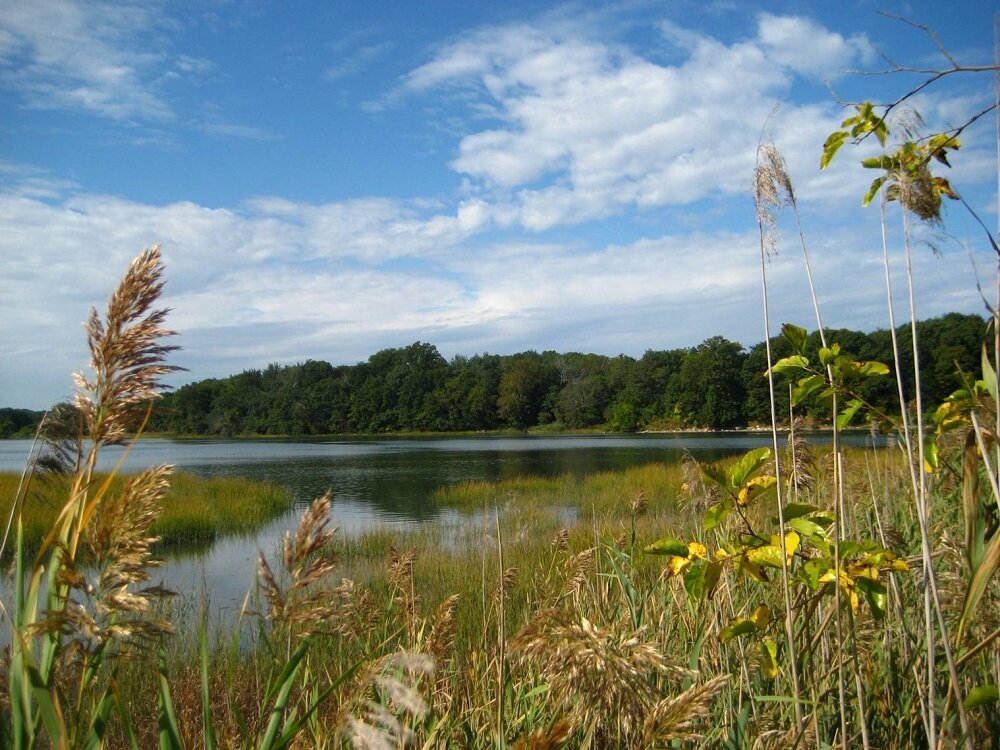East Coast of Hunter Island (Photo: Alexander Belisle)
Hunter Island
At nearly 220 acres, Hunter Island contains some of the park’s finest habitat – a rocky coastline, tidal wetlands, and dense woods, as well as the Park’s highest point, at 90 feet above sea level. Tidal wetlands ring the island’s coast. The north and east shores are part of the Hunter Island Marine Zoology and Geology Sanctuary created in 1967.
The island is mostly forested – the largest contiguous forest in the park – dominated by some of the park’s oldest stands of oaks. Other trees dominating the canopy include various Hickories, Tulip Tree, Sassafras, and Black Birch. A lush groundcover of native plants like Wild Geranium and White Wood Aster blanket the forest floor at different times of the year. Hunter Island’s extensive forest supports a rich bird population such as Rose‑breasted Grosbeak, Red‑eyed Vireo, and Eastern Wood-Pewee. The island’s two conifer stands attract local species of owls during the winter.
Originally occupied by local indigenous people known as the Siwanoy, Hunter Island was purchased in 1654 by Thomas Pell, an English doctor and businessman from Connecticut. The island was called Pell Island and later Pelican Island until John Hunter purchased it in 1804 and built an elegant mansion on its highest point. Plants that Hunter imported for his gardens, like Periwinkle and Hosta, are still visible. After passing through the hands of several other families, Hunter Island became public parkland in 1888. Once surrounded by water, the island was attached to the mainland in the 1930s when Orchard Beach was built.
Twin Island with Sphinx Rock (Photo: John Grayley, NYC Parks & Recreation)
Twin Island
The 19-acre area now known as Twin Island features salt marsh and a variety of wildlife including swans, ducks, egrets, osprey, fish, clams, and crabs. Twin Island’s unique intertidal marine ecosystem is listed as rare in New York State. This is also a place to spot hawks and woodpeckers. In late winter, Twin Island provides a good viewing place to watch Harbor Seals sunning themselves offshore on Middle Reef, a series of rocks located to the east in Long Island Sound.
Twin Island is also comprised of a small woodland, an abundance of flowers and grasses, and a rocky coast or Hartland Schist, the same bedrock formation found along the New England coastline. The unusually shaped “Sphinx Rock,” is perched upon the rocky shore here, as seen here in winter.


